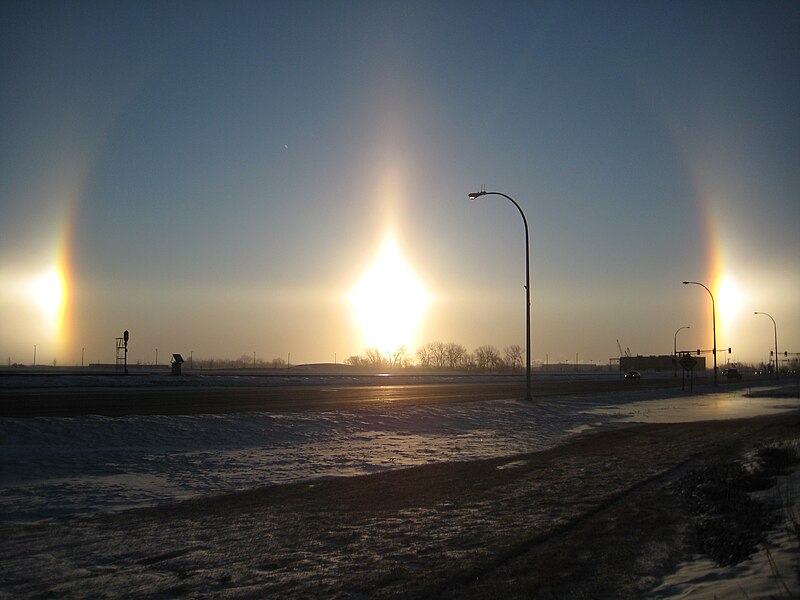Bows, Halos, and Dogs
This post has nothing to do with ribbons, angels, or Fido. It's all about optical weather phenomena!
Sun dogs, halos, and rainbows are all due to the same basic physics: refraction of sunlight through moisture in the atmosphere. Refraction is the bending of light as it passes through a material, such as the lenses of your glasses.
The difference between halos and rainbows is two-fold: the shape and the material that the light refracts through. To form a rainbow, light refracts through and reflects from a drop of water in the atmosphere which is approximately spherical. On the other hand, a halo forms from refraction through a hexagonal crystal of ice. The angle through which light refracts depends on the surface and material it refracts through, so the angle between the sun and the light phenomenon we see in the sky is different for rainbows and halos.
Because the light reflects off the back of the water droplet when forming a rainbow, you see a rainbow with your back to the sun. Since the angle of refraction and the distance to the droplets is very large, the rainbow has a radius that is so large you only see about a half-circle. You can make a full-circle rainbow, though, by shooting water from a hose in a fine spray with the sun behind you. For a halo, the light refracting through the ice crystal is at a much smaller angle from the sun, so you often see a full circle all the way around the sun.
Rainbows and halos are circles, because light is refracted in all directions - above, below, left, right - from the sun. Spherical raindrops are the same in all directions, so they always refract the same in all directions. Hexagonal ice crystals are not so symmetric, but if they are blown and buffeted around in the atmosphere, they will be randomly oriented, so some will refract light above, some below, some left, some right from the sun, and it will still make a full circle.
Sun dogs, on the other hand are bright spots left and right of the sun - not a full circle. Why? Like halos, sun dogs are due to refraction through ice crystals in the atmosphere. The difference is that the air in that region is calmer, and the ice crystals begin to fall down through the air. In doing so, they orient horizontally. The horizontal ice crystals refract the sun light left and right, so we see bright spots left and right of the sun (often in addition to a faint halo due to crystals that have not yet been horizontally oriented).
Any of these phenomena could theoretically happen with any light source, including the moon. The moon is much less bright than the sun, however, so we don't see these phenomena as often with the moon. Rainbows spread the light around such a large circle, that a moon rainbow is almost always too faint to see. Moon halos and moon dogs are seen when the moon is full (or nearly) and at its brightest, and when the atmospheric conditions are really good.
Another note: You don't have to have rain or snow actually hitting the ground to see these phenomena, there just needs to be moisture in the atmosphere. In fact, halos and sun dogs are often due to ice crystals in high, cold cirrus clouds even on days when it's much too warm for ice near the ground.

No comments:
Post a Comment